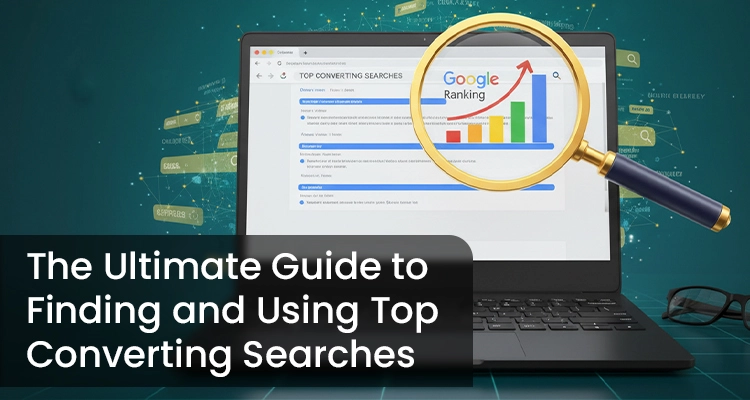Five Ways to Improve Your Site’s Ranking (SEO)

Search Engine Optimization (SEO) remains one of the most powerful digital marketing strategies for businesses looking to increase online visibility. With millions of websites competing for attention, understanding and implementing effective SEO techniques can help your site climb the ranks, bringing more organic traffic and engagement. Below are five crucial strategies for improving your website’s ranking, along with actionable steps, tools, and tips to maximize your results.
1. Prioritize Keyword Research for Targeted Visibility
Effective keyword research is the foundation of a successful SEO strategy. Without understanding which keywords your target audience uses, you might miss out on significant search traffic. Researching and selecting the right keywords helps you understand user intent and tailor your content to meet those needs.
Actionable Steps for Keyword Research:
– Use Tools for Insight: Platforms like Google Keyword Planner, Ahrefs, and SEMrush offer valuable insights into keyword volume, difficulty, and related terms. For example, if you sell eco-friendly products, search for terms like “sustainable products” or “eco-friendly lifestyle tips” to identify high-traffic keywords.
– Focus on Long-Tail Keywords: Long-tail keywords—phrases with three or more words—are often less competitive and can drive highly targeted traffic. For instance, instead of targeting “running shoes,” consider a long-tail variation like “best running shoes for beginners” to capture a more specific audience.
– Analyze Competitors: Reviewing competitor sites can reveal keywords they’re ranking for, giving you ideas for your content. Tools like SpyFu and Ahrefs let you see competitors’ top keywords, which can inspire your own strategy.
By integrating keyword research into your content strategy, you ensure your pages align with what potential customers are searching for, increasing your visibility in search results.
2. Optimize On-Page Elements for Search Engines and Users
On-page optimization involves enhancing specific elements within your site pages to improve search engine rankings and enhance user experience. Search engines look at elements like title tags, meta descriptions, and headers to understand the content on a page.
Key On-Page Optimization Tactics:
– Craft Compelling Title Tags and Meta Descriptions: Your title tag should include your primary keyword and be no longer than 60 characters. Meta descriptions, meanwhile, should summarize the page content and encourage clicks—keeping it under 160 characters helps.
– Use Proper Header Tags: Header tags (H1, H2, H3, etc.) make content more readable for users and help search engines understand the page structure. Use the H1 tag for the main title and subsequent headers (H2, H3) for section titles, including keywords naturally.
– Image Optimization: Images can slow down page load time if not optimized. Use descriptive, keyword-rich file names for images, and compress them to maintain quick load times. Additionally, alt text helps visually impaired users and improves search engine comprehension.
Optimizing these on-page elements will improve how your site appears in search results and make it more appealing to visitors.
3. Publish High-Quality, Valuable Content Regularly
Content is the backbone of SEO. Regularly publishing high-quality content establishes your site as an authority in its niche, which search engines recognize and reward. Valuable content keeps users engaged, reducing bounce rates and increasing the likelihood of conversions.
Tips for Content Creation:
– Answer User Queries: Identify common questions within your industry and create content that addresses them. For example, a finance blog might write a post titled “How to Create a Budget Plan,” addressing common budgeting questions.
– Create Comprehensive Guides and Long-Form Content: Long-form content (1,500+ words) generally ranks higher in search results as it provides in-depth information. Make sure each piece of content is well-researched, easy to read, and valuable to readers.
– Update Existing Content: Don’t let older content stagnate. Periodically revisit and update past articles to keep information current, correct broken links, and optimize them with relevant keywords. This refresh can boost older pages in the rankings.
When you provide relevant, high-value content, visitors spend more time on your site, signaling to search engines that your site is valuable, which can improve rankings.
4. Improve Technical SEO for Better Site Health and Usability
Technical SEO involves optimizing the infrastructure of your website so that search engines can easily crawl and index it. Google favors sites that are secure, fast, and mobile-friendly, as these factors enhance user experience.
Important Technical SEO Practices:
– Ensure Mobile-Friendliness: With mobile traffic making up more than half of web searches, a mobile-responsive design is critical. Google’s Mobile-Friendly Test tool allows you to check how easily a visitor can navigate your site on mobile.
– Optimize Site Speed: Slow-loading sites lose visitors quickly. Compress images, leverage browser caching, and minimize code to improve load times. Google PageSpeed Insights offers a detailed report on areas where your site can improve.
– Implement HTTPS: Sites with HTTPS encryption are more secure and favored by Google. An SSL certificate shows visitors that their data is safe, which can boost both SEO and user trust.
– Optimize URL Structure: Clean, descriptive URLs that include relevant keywords are easier for search engines to interpret. Avoid unnecessary words or characters in URLs to keep them short and readable.
By enhancing technical SEO, you ensure search engines can access and rank your content effectively, leading to better performance in search results.
5. Build High-Quality Backlinks for Authority
Backlinks—links from other websites to your own—signal to search engines that your site is credible and valuable. However, it’s not just about the number of backlinks but the quality and relevance of the linking sites. High-quality backlinks from authoritative sources can improve your ranking significantly.
Effective Backlink Building Strategies:
– Guest Blogging: Contribute high-quality content to reputable blogs within your niche, with links back to your site. This not only builds links but also establishes you as an expert in your industry.
– Collaborate with Influencers: Partnering with influencers in your industry can generate backlinks and increase your site’s reach. Influencers often share content on their own sites and social channels, providing high-quality traffic and link value.
– Create Shareable Content: When you produce content like infographics, research studies, or valuable resources, people are more likely to link to it. For example, an infographic on “Top 10 SEO Tips” might earn backlinks from other SEO-related blogs.
– Use Broken Link Building: Identify broken links on reputable sites and reach out to suggest your content as a replacement. Tools like Ahrefs can help find broken links in your niche, offering an opportunity to replace dead links with your site.
Building quality backlinks takes time and effort, but it’s worth it. Each link acts as a vote of confidence in your content, which can help boost your site’s authority and rankings.
Combining These Strategies for Maximum Impact
While each of these strategies on its own can improve your site’s ranking, combining them results in a more comprehensive and powerful SEO approach. Here’s how to align these tactics for optimal results:
– Keyword Research + Content Creation: Use your keyword research to guide content topics, ensuring you’re writing about what your audience is actively searching for.
– On-Page SEO + Content Updates: Regularly update your site’s pages with fresh information and on-page optimizations, keeping your content relevant and search-friendly.
– Technical SEO + Site Speed: Faster, mobile-friendly sites keep users engaged, improving both SEO and user experience metrics.
– Backlinks + Valuable Content: Publish content worth linking to and reach out to others in your industry for backlink opportunities.
SEO is a long-term commitment, but with consistent effort across each of these areas, you’ll build a strong online presence that draws in organic traffic and ranks competitively. By prioritizing keyword research, optimizing on-page elements, publishing valuable content, improving technical SEO, and building high-quality backlinks, you create a site that’s appealing both to search engines and to the users you want to reach.
Content written by-Praveen
Praveen is part of the expert content marketing team at ITCombine. He has an expertise of curating meaningful information that can be used by visitors in general. Praveen is also involved in creating Client specific stories and blogs.
Copyright © 2025 - itcombine.com.
All Rights Reserved.








